Your browser does not fully support modern features. Please upgrade for a smoother experience.
Please note this is an old version of this entry, which may differ significantly from the current revision.
Energy is very important in daily life. The smart power system provides an energy management system using various techniques. Among other load types, campus microgrids are very important, and they consume large amounts of energy. Energy management systems in campus prosumer microgrids have been addressed in different works.
- campus microgrid
- prosumer market
- batteries
1. Overview of Campus Energy Management
Energy management is defined as a process to optimize energy production from renewable energy resources (Res) and transmit this energy to consumers while cost-effectively minimizing the risk of system failure and gas emissions [1]. The concept of energy management began in the 1970s with the name of energy control centers, also known as ECCs. This concept was further expanded with the inclusion of different control schemes such as demand side management (DSM), load control (LC), demand response monitoring (DRM), etc. [2]. A simple energy management process consists of energy planning, execution, monitoring, verification, and understanding its usage. This process is represented in Figure 1.

Figure 1. Simple energy management process.
The management of energy in a microgrid is critical because it is directly related to the economics of the grid. In campus prosumer microgrid energy management, the production of renewable energy resources present at a university campus is monitored, controlled, and optimized for the campus load. Worldwide, campuses of different universities are being converted to microgrids with REs as generation sources and environmentally friendly energy storage [3]. Most of the research published has contained simulated campus microgrid solutions, but practically working microgrids are also being developed at universities [4][5][6][7][8][9][10][11]. A simulation model of a campus microgrid was developed in Serbia for the University of Novi Sad in 2018, and it used photovoltaics (PV) and wind in conjunction with biomass and energy storage facilities. In Italy, an energy-efficient microgrid solution was presented by Stefano et al. for the University of Genova. Multiple aspects of a campus microgrid were analyzed, taking into consideration the grid-connected, as well as standalone, operations [12]. However, this research lacked a feasibility analysis and the regulation problems of the proposed microgrid. Kritiawan et al. performed an in-detail feasibility analysis for a campus microgrid at Sebelas Maret University, located in Indonesia [13]. Voltage regulation is an important factor that should be taken into account when designing a campus microgrid [14]. Valentina et al. designed a microgrid for an island located in Singapore to improve the voltage regulation and power factor of the system. This design consisted of PV and diesel generators as generating sources, and it resulted in the lowest operational costs [15]. A pictorial representation of several campus microgrids installed all over the world is provided in Figure 2.
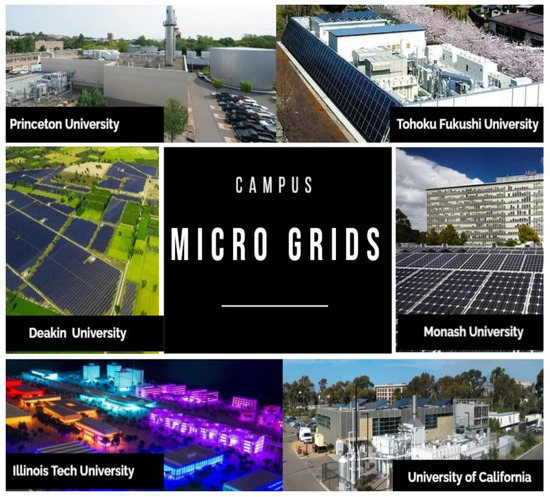
Figure 2. Campus microgrids at different universities.
2. Objectives of Campus Microgrid Energy Management
The prime objective of energy management in a university campus microgrid is to optimally allocate generation and storage resources in a way that achieves the minimum per-unit cost of energy with maximum efficiency, while reducing gas emissions. Campus microgrid energy management may have single or numerous objectives such as resiliency, power quality, voltage and frequency regulation, reduced cost of energy, profit maximization, and life expectancy of transformers [16][17][18][19]. Universities can also obtain a green certificate by replacing the existing power infrastructure with a renewable energy-based microgrid [20]. Important objectives of a campus microgrid are represented in Figure 3. Campus microgrids should be efficient and reliable [21]. An energy-efficient campus microgrid solution was presented by Young et al. for the Gwanak Campus in South Korea, and it aimed to reduce the cost of energy by 21% and gas emissions by 110 TOE [22]. The economy is the most important element of a campus microgrid. Universities should be able to generate energy for the lowest possible cost. Currently, electric vehicles are becoming famous due to their environmentally friendly nature. The integration of these EVs with the lowest charging cost is another objective of campus microgrids. EV integration with a campus microgrid may cause stress on transformers [23]. Similarly, REs which are not properly sized may cause reactive power imbalances in a system, which may lead to frequent disconnections [24]. Low power outages and the continuity of supply are other objectives of campus microgrid energy management [25]. The achievement of all objectives in a single study is impossible. Most of the existing research includes a balance between economic and technical objectives.
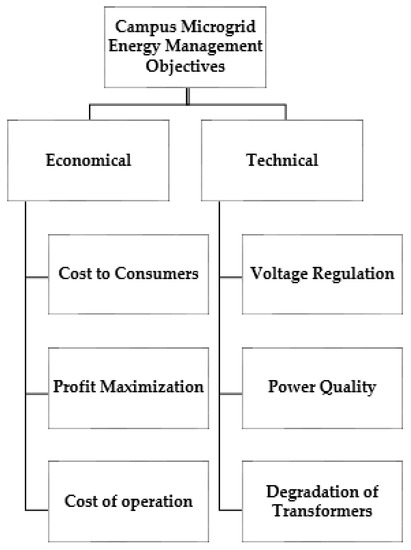
Figure 3. Important objectives of energy management in campus microgrids.
3. Architecture of Campus Microgrids
Campus microgrids are designed to control the power production and utilization from REs and coordinate with smart metering, protective, storage, and load management devices, with the help of a control system, to achieve minimum costs and maximum efficiency. Architecture and infrastructure are two common terms used to describe the design of a campus microgrid. Microgrid infrastructure refers to all the components that a microgrid contains, such as transformers, smart metering devices, protection systems, switches, communication technologies, and cables [26]. The infrastructure of a microgrid should be resilient, which means that it should be capable enough to withstand extremely faulty conditions and recover quickly in the case of any disturbance [27]. Architecture defines how microgrid components connect to allow energy to flow and to enable storage. Both civil and electrical architecture are important factors in the design of a campus microgrid. A microgrid can operate in three different modes: off-grid, on-grid, and on/off-grid. Architecture generally changes slightly depending on the mode of operation. Campus microgrids typically work in the on-grid mode so that they can support the existing grid in the case of excessive supply. The common architecture of a microgrid may consist of three different bus configurations: centralized DC bus configuration, centralized AC bus configuration, and hybrid AC/DC bus configuration. The architecture of typical off-grid campus microgrids follows the DC centralized bus configuration, which is shown in Figure 4. In this architecture, the DC resources are directly connected to a centralized DC bus bar, while the AC components of the microgrid are connected via converters [28][29][30].
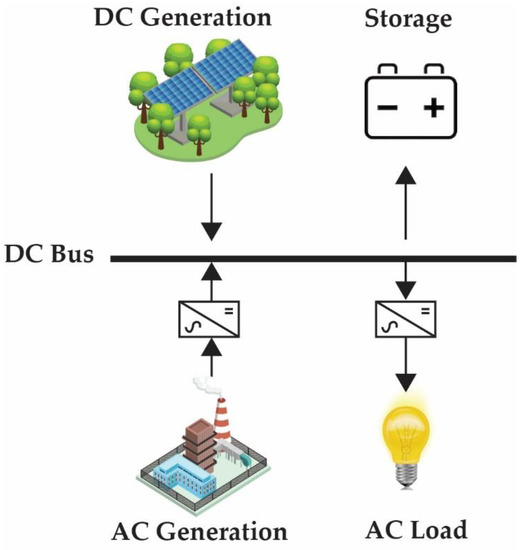
Figure 4. DC bus architecture of campus microgrids.
A typical AC bus configuration is shown in Figure 5, and it is the opposite of a DC bus configuration. This type of architecture requires higher voltage, which results in lower losses. REs largely supply direct DC, and it becomes less economical to first convert the power of REs into AC before supplying it to the central busbar; therefore, this type of configuration is found in few reach papers [31][32][33][34].
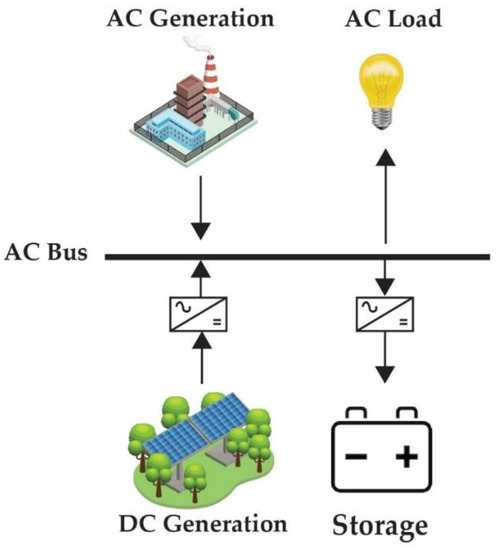
Figure 5. AC bus architecture of campus microgrids.
An advanced architecture for a campus microgrid is shown in Figure 6. It consists of both AC and DC busses, where the AC bus connects the AC components and the DC bus connects DC loads, storage, and generation. Finally, a bidirectional inverter connects these two buses [35][36][37][38]. In the literature, several studies have compared the types of architecture discussed above, and they concluded that a hybrid architecture for microgrids is more beneficial [39].
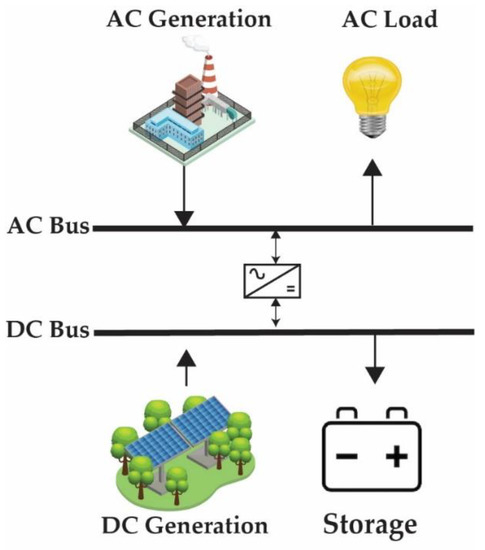
Figure 6. The hybrid bus architecture of campus microgrids.
4. Storage Technologies
Storage is a core component of a microgrid which serves many purposes during its operation. Besides providing power to load during the absence of generation, storage is used to provide ancillary services to smart grids, such as peak shaving [40], balancing the load profile [41], and improving system reliability [42]. In particular, a standalone campus microgrid cannot be sustained without the necessary storage facilities. A large portion of the total installation cost is attributable to the cost of storage. Storage degradation cost is another important factor that affects the overall system cost. Muqeet et.al [43] proposed a campus microgrid for the University of Engineering and Technology in Taxila, Pakistan. The authors considered the battery degradation cost in their design and compared different models, concluding that a properly scheduled storage technology results in a reduced cost of energy. There are several types of energy storage devices (ESDs) available, such as thermal [44], electrical [45], mechanical [46], electrochemical [47], and chemical [48]. With the advancements in plugin electric vehicles (PEV), these can also be used as storage devices in the vehicle-to-grid (V2G) mode of operation [49]. Storage configurations can be divided into three main categories: single storage configuration, multi-storage configuration, and swappable storage configuration [50]. In most of the existing literature, a single type of storage device is used in campus microgrids, while some advanced research designs have focused on the use of multiple types of storage technologies to improve their efficiency and useful life and reduce overall operational costs [45]. Riad Chedid et al. redesigned a campus microgrid for the American University of Beirut to reduce its dependence on a diesel generator. In the proposed design, REs replaced the fossil fuel generation with a combination of battery energy storage devices, which resulted in tremendous average annual savings of USD 1,336,000 [51]. Reyasudin Basir et al. proposed a microgrid design for the University Kuala Lumpur in Malaysia, and they proved that a grid-connected campus microgrid with battery storage was the most economical solution for this university [52]. When comparing different battery energy storage technologies, lithium-ion technology is considered the most suitable option. Yuly V. Garcia et al. designed a campus microgrid for the University of Puerto Rico in the United States. In the proposed design, solar and combined heat and power (CHP) technologies were used to reduce the fuel price. It was concluded that a combination of lithium-ion storage with solar generation and CHP provided the lowest fuel cost for a 10-year scenario [53]. A single storage device can be economical, but it always has some drawbacks which can be overcome by using multiple energy storage devices. Leskarac et al. proposed the use of PEV storage with a fuel cell to minimize the costs of operation for large commercial building microgrids [54]. A similar system was designed by Kumar et al. for the Nanyang Technological University of Singapore. It was concluded that a microgrid containing solar and natural gas as generation with PEV and fuel cells as storage could perfectly achieve the demand response targets [55]. Pedro Moura et al. practically demonstrated the use of multiple energy storage technologies for a campus microgrid at the University of Coimbra in Portugal to achieve the lowest cost of energy. The installed system contained PEV and li-ion batteries as storage systems, while grid-connected PV generation made the campus a net-zero-energy building. In [56], Hanane Dagdougui proposed the use of Li-ion batteries with a combination of a supercapacitor and hydrogen storage to improve the storage life and reduce the operating costs of the system. Rong-Jong Wai proposed the use of an ultra-capacitor and batteries as the storage medium for the economic design of the National Taiwan University of Science and Technology in Taiwan [57]. Current research is more focused on developing new storage technologies and making the existing storage technologies more compact.
This entry is adapted from the peer-reviewed paper 10.3390/en16041863
References
- Hussain, A.; Bui, V.-H.; Kim, H.-M. A Resilient and Privacy-Preserving Energy Management Strategy for Networked Microgrids. IEEE Trans. Smart Grid 2016, 9, 2127–2139.
- Handschin, E.; Petroianu, A. Energy Management Systems: Operation and Control of Electric Energy Transmission Systems; Springer Science & Business Media: Berlin/Heidelberg, Germany, 2012; ISBN 3-642-84041-8.
- Muqeet, H.A.; Munir, H.M.; Javed, H.; Shahzad, M.; Jamil, M.; Guerrero, J.M. An Energy Management System of Campus Microgrids: State-of-the-Art and Future Challenges. Energies 2021, 14, 6525.
- Hipwell, S. Developing smart campuses—A working model. In Proceedings of the 2014 International Conference on Intelligent Green Building and Smart Grid (IGBSG), Taipei, Taiwan, 23–25 April 2014; IEEE: New York, NY, USA, 2014; pp. 1–6.
- Mitchell Finnigan, S.; Clear, A.K.; Olivier, P. SpaceBot: Towards Participatory Evaluation of Smart Buildings. In Proceedings of the Extended Abstracts of the 2018 CHI Conference on Human Factors in Computing Systems, Montreal, QC, Canada, 21–26 April 2018; pp. 1–6.
- Jung, J.; Villaran, M. Optimal Planning and Design of Hybrid Renewable Energy Systems for Microgrids. Renew. Sustain. Energy Rev. 2017, 75, 180–191.
- Solanki, Z.; Wani, U.; Patel, J. Demand side management program for balancing load curve for CGPIT college, bardoli. In Proceedings of the 2017 International Conference on Energy, Communication, Data Analytics and Soft Computing (ICECDS), Chennai, India, 1–2 August 2017; IEEE: New York, NY, USA, 2017; pp. 769–774.
- Mantovani, G.; Costanzo, G.T.; Marinelli, M.; Ferrarini, L. Experimental Validation of Energy Resources Integration in Microgrids via Distributed Predictive Control. IEEE Trans. Energy Convers. 2014, 29, 1018–1025.
- Tellez, S.; Alvarez, D.; Montano, W.; Vargas, C.; Cespedes, R.; Parra, E.; Rosero, J. National laboratory of smart grids (LAB+ i) at the National University of Colombia-Bogota Campus. In Proceedings of the 2014 IEEE PES Transmission & Distribution Conference and Exposition-Latin America (PES T&D-LA), Medellin, Colombia, 10–13 September 2014; IEEE: New York, NY, USA, 2014; pp. 1–6.
- Xu, P.; Jin, Z.; Zhao, Y.; Wang, X.; Sun, H. Design and Operation Experience of Zero-Carbon Campus. EDP Sci. 2018, 48, 03004.
- Tatro, R.; Vadhva, S.; Kaur, P.; Shahpatel, N.; Dixon, J.; Alzanoon, K. Building to Grid (B2G) at the California smart grid center. In Proceedings of the 2010 IEEE International Conference on Information Reuse & Integration, Las Vegas, NV, USA, 4–6 August 2010; IEEE: New York, NY, USA, 2010; pp. 382–387.
- Bracco, S.; Delfino, F.; Laiolo, P.; Rossi, M. The smart city energy infrastructures at the savona campus of the university of genoa. In Proceedings of the 2016 AEIT International Annual Conference (AEIT), Capri, Italy, 5–7 October 2016; pp. 1–6.
- Kristiawan, R.B.; Widiastuti, I.; Suharno, S. Technical and Economical Feasibility Analysis of Photovoltaic Power Installation on a University Campus in Indonesia. MATEC Web Conf. 2018, 197, 08012.
- Morales González, R.; van Goch, T.A.J.; Aslam, M.F.; Blanch, A.; Ribeiro, P.F. Microgrid design considerations for a smart-energy university campus. In Proceedings of the IEEE PES Innovative Smart Grid Technologies, Europe, Istanbul, Turkey, 12–15 October 2014; pp. 1–6.
- Bertolotti, V.; Procopio, R.; Rosini, A.; Bracco, S.; Delfino, F.; Soh, C.B.; Cao, S.; Wei, F. Energy management system for pulau ubin islanded microgrid test-bed in Singapore. In Proceedings of the 2020 IEEE International Conference on Environment and Electrical Engineering and 2020 IEEE Industrial and Commercial Power Systems Europe (EEEIC / I CPS Europe), Madrid, Spain, 9–12 June 2020; pp. 1–6.
- Sexauer, J.M.; McBee, K.D.; Bloch, K.A. Applications of Probability Model to Analyze the Effects of Electric Vehicle Chargers on Distribution Transformers. IEEE Trans. Power Syst. 2012, 28, 847–854.
- Lunz, B.; Yan, Z.; Gerschler, J.B.; Sauer, D.U. Influence of Plug-in Hybrid Electric Vehicle Charging Strategies on Charging and Battery Degradation Costs. Energy Policy 2012, 46, 511–519.
- Mahmood, A.; Amjad, M.; Malik, M.; Ali, A.; Muhammad, A. Reactive Power Control of A 220kv Transmission Line Using PWM Based Statcom with Real Time Data Implementation. Univ. Eng. Technol. Taxila Tech. J. 2016, 21, 43.
- Ali, A.; Amjad, M.; Mehmood, A.; Asim, U.; Abid, A. Cost Effective Power Generation Using Renewable Energy Based Hybrid System for Chakwal, Pakistan. Sci. Int. 2015, 27, 6017–6022.
- Lazaroiu, G.C.; Dumbrava, V.; Costoiu, M.; Teliceanu, M.; Roscia, M. Smart campus-an energy integrated approach. In Proceedings of the 2015 International Conference on Renewable Energy Research and Applications (ICRERA), Palermo, Italy, 22–25 November 2015; IEEE: New York, NY, USA, 2015; pp. 1497–1501.
- Xie, Y.; Lin, S.; Liang, W.; Yang, Y.; Liu, M. An Interval Probabilistic Energy Flow Calculation Method for CCHP Campus Microgrids. IEEE Syst. J. 2022, 16, 6219–6230.
- Campus Microgrid Project by LSIS at SNU—News—Newsroom—SNU NOW. Available online: https://en.snu.ac.kr/snunow/snu_media/news?md=v&bbsidx=126250 (accessed on 1 September 2022).
- Kavousi-Fard, A.; Abunasri, A.; Zare, A.; Hoseinzadeh, R. Impact of Plug-in Hybrid Electric Vehicles Charging Demand on the Optimal Energy Management of Renewable Micro-Grids. Energy 2014, 78, 904–915.
- Ovalle, A.; Hably, A.; Bacha, S.; Ahmed, M. Voltage Support by optimal integration of plug-in hybrid electric vehicles to a residential grid. In Proceedings of the IECON 2014—40th Annual Conference of the IEEE Industrial Electronics Society, Dallas, TX, USA, 29 October–1 November 2014; IEEE: New York, NY, USA, 2014; pp. 4430–4436.
- Aram, A. Microgrid Market in the USA. Glob. Innov. Rep. 2017, 2017, 2630.
- Dehkordi, N.M.; Baghaee, H.R.; Sadati, N.; Guerrero, J.M. Distributed Noise-Resilient Secondary Voltage and Frequency Control for Islanded Microgrids. IEEE Trans. Smart Grid 2018, 10, 3780–3790.
- Ibrahim, M.; Alkhraibat, A. Resiliency Assessment of Microgrid Systems. Appl. Sci. 2020, 10, 1824.
- Wang, Z.; Gu, C.; Li, F. Flexible Operation of Shared Energy Storage at Households to Facilitate PV Penetration. Renew. Energy 2018, 116, 438–446.
- Morin, D.; Stevenin, Y.; Grolleau, C.; Brault, P. Evaluation of Performance Improvement by Model Predictive Control in a Renewable Energy System with Hydrogen Storage. Int. J. Hydrogen Energy 2018, 43, 21017–21029.
- Huang, W.; Fu, Z.; Hua, L. Research on optimal capacity configuration for distributed generation of island micro-grid with wind/solar/battery/diesel engine. In Proceedings of the 2018 2nd IEEE Conference on Energy Internet and Energy System Integration (EI2), Beijing, China, 20–22 October 2018; IEEE: New York, NY, USA, 2018; pp. 1–6.
- Eseye, A.T.; Zheng, D.; Zhang, J.; Wei, D. Optimal Energy Management Strategy for an Isolated Industrial Microgrid Using a Modified Particle Swarm Optimization. In Proceedings of the 2016 IEEE International Conference on Power and Renewable Energy (ICPRE), Shanghai, China, 21–23 October 2016; pp. 494–498.
- Madiba, T.; Bansal, R.; Justo, J.; Kusakana, K. Optimal control system of under frequency load shedding in microgrid system with renewable energy resources. In Smart Energy Grid Design for Island Countries; Springer: Berlin/Heidelberg, Germany, 2017; pp. 71–96.
- Alvarez, S.R.; Ruiz, A.M.; Oviedo, J.E. Optimal design of a diesel-PV-wind system with batteries and hydro pumped storage in a Colombian community. In Proceedings of the 2017 IEEE 6th International Conference on Renewable Energy Research and Applications (ICRERA), San Diego, CA, USA, 5–8 November 2017; IEEE: New York, NY, USA, 2017; pp. 234–239.
- An, L.N.; Dung, T.T.M.; Quoc-Tuan, T. Optimal energy management for an on-grid microgrid by using branch and bound method. In Proceedings of the 2018 IEEE International Conference on Environment and Electrical Engineering and 2018 IEEE Industrial and Commercial Power Systems Europe (EEEIC/I&CPS Europe), Palermo, Italy, 12–15 June 2018; IEEE: New York, NY, USA, 2018; pp. 1–5.
- Wang, H.; Huang, J. Joint Investment and Operation of Microgrid. IEEE Trans. Smart Grid 2015, 8, 833–845.
- Devi, V.K.; Premkumar, K.; Beevi, A.B. Energy Management Using Battery Intervention Power Supply Integrated with Single Phase Solar Roof Top Installations. Energy 2018, 163, 229–244.
- Ramli, M.A.; Bouchekara, H.; Alghamdi, A.S. Optimal Sizing of PV/Wind/Diesel Hybrid Microgrid System Using Multi-Objective Self-Adaptive Differential Evolution Algorithm. Renew. Energy 2018, 121, 400–411.
- Tayab, U.B.; Yang, F.; El-Hendawi, M.; Lu, J. Energy Management system for a grid-connected microgrid with photovoltaic and battery energy storage system. In Proceedings of the 2018 Australian & New Zealand Control Conference (ANZCC), Melbourne, VIC, Australia, 7–8 December 2018; IEEE: New York, NY, USA, 2018; pp. 141–144.
- Solorzano del Moral, J.; Egido, M.Á. Simulation of AC, DC, and AC-DC Coupled mini-grids. In search of the most efficient system. In Proceedings of the 6th European Conference on PV hybrids an Mini Grids, Chambery, France, 25–27 April 2012.
- Levron, Y.; Shmilovitz, D. Power Systems’ Optimal Peak-Shaving Applying Secondary Storage. Electr. Power Syst. Res. 2012, 89, 80–84.
- Díaz-González, F.; Sumper, A.; Gomis-Bellmunt, O.; Villafáfila-Robles, R. A Review of Energy Storage Technologies for Wind Power Applications. Renew. Sustain. Energy Rev. 2012, 16, 2154–2171.
- Subburaj, A.S.; Pushpakaran, B.N.; Bayne, S.B. Overview of Grid Connected Renewable Energy Based Battery Projects in USA. Renew. Sustain. Energy Rev. 2015, 45, 219–234.
- Abd ul Muqeet, H.; Munir, H.M.; Ahmad, A.; Sajjad, I.A.; Jiang, G.-J.; Chen, H.-X. Optimal Operation of the Campus Microgrid Considering the Resource Uncertainty and Demand Response Schemes. Math. Probl. Eng. 2021, 2021, 5569701.
- Ibrahim, H.; Belmokhtar, K.; Ghandour, M. Investigation of Usage of Compressed Air Energy Storage for Power Generation System Improving-Application in a Microgrid Integrating Wind Energy. Energy Procedia 2015, 73, 305–316.
- Jing, W.; Lai, C.H.; Wong, W.S.H.; Wong, M.L.D. Dynamic Power Allocation of Battery-Supercapacitor Hybrid Energy Storage for Standalone PV Microgrid Applications. Sustain. Energy Technol. Assess. 2017, 22, 55–64.
- Arani, A.K.; Karami, H.; Gharehpetian, G.; Hejazi, M. Review of Flywheel Energy Storage Systems Structures and Applications in Power Systems and Microgrids. Renew. Sustain. Energy Rev. 2017, 69, 9–18.
- Konstantinopoulos, S.A.; Anastasiadis, A.G.; Vokas, G.A.; Kondylis, G.P.; Polyzakis, A. Optimal Management of Hydrogen Storage in Stochastic Smart Microgrid Operation. Int. J. Hydrogen Energy 2018, 43, 490–499.
- Alsaidan, I.; Khodaei, A.; Gao, W. A Comprehensive Battery Energy Storage Optimal Sizing Model for Microgrid Applications. IEEE Trans. Power Syst. 2017, 33, 3968–3980.
- Liu, Z.; Chen, Y.; Zhuo, R.; Jia, H. Energy Storage Capacity Optimization for Autonomy Microgrid Considering CHP and EV Scheduling. Appl. Energy 2018, 210, 1113–1125.
- Ali, A.; Shakoor, R.; Raheem, A.; Awais, Q.; Khan, A.A.; Jamil, M. Latest Energy Storage Trends in Multi-Energy Standalone Electric Vehicle Charging Stations: A Comprehensive Study. Energies 2022, 15, 4727.
- Chedid, R.; Sawwas, A.; Fares, D. Optimal Design of a University Campus Micro-Grid Operating under Unreliable Grid Considering PV and Battery Storage. Energy 2020, 200, 117510.
- Khan, M.R.B.; Pasupuleti, J.; Al-Fattah, J.; Tahmasebi, M. Optimal Grid-Connected PV System for a Campus Microgrid. Indones. J. Electr. Eng. Comput. Sci. 2018, 12, 899–906.
- Garcia, Y.V.; Garzon, O.; Andrade, F.; Irizarry, A.; Rodriguez-Martinez, O.F. Methodology to Implement a Microgrid in a University Campus. Appl. Sci. 2022, 12, 4563.
- Leskarac, D.; Moghimi, M.; Liu, J.; Water, W.; Lu, J.; Stegen, S. Hybrid AC/DC Microgrid Testing Facility for Energy Management in Commercial Buildings. Energy Build. 2018, 174, 563–578.
- Kumar, K.P.; Saravanan, B. Real Time Optimal Scheduling of Generation and Storage Sources in Intermittent Microgrid to Reduce Grid Dependency. Indian J. Sci. Technol. 2016, 9, 1–4.
- Dagdougui, H.; Dessaint, L.; Gagnon, G.; Al-Haddad, K. Modeling and optimal operation of a university campus microgrid. In Proceedings of the 2016 IEEE Power and Energy Society General Meeting (PESGM), Boston, MA, USA, 17–21 June 2016; IEEE: New York, NY, USA, 2016; pp. 1–5.
- Wai, R.-J. Systematic Design of Energy-Saving Action Plans for Taiwan Campus by Considering Economic Benefits and Actual Demands. Energies 2022, 15, 6530.
This entry is offline, you can click here to edit this entry!
